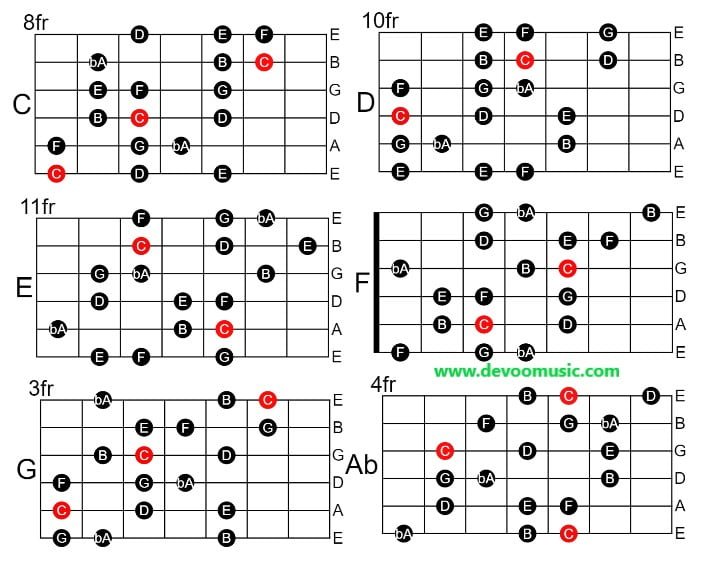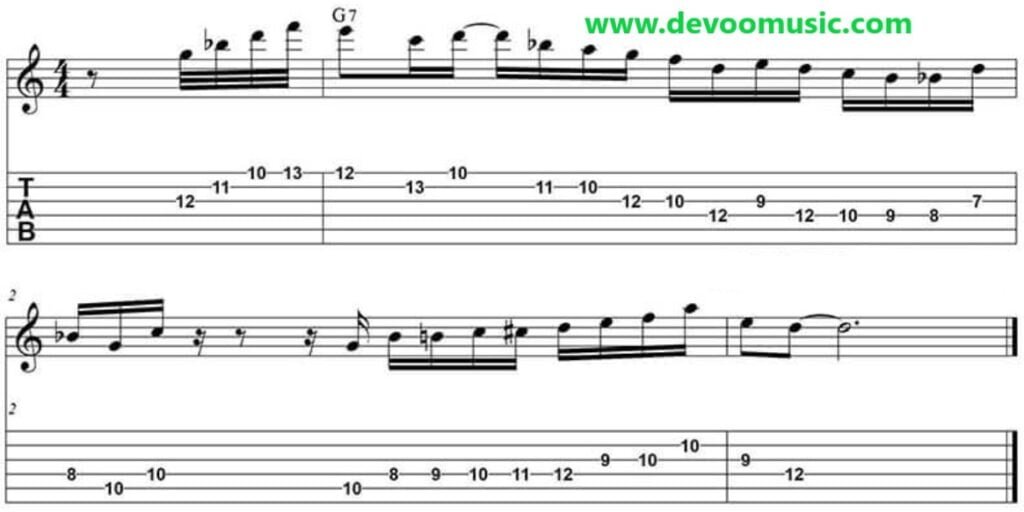Harmonic Major Scale
What is The Harmonic Major Scale?
The harmonic major scale as Ionian b6 mode or Ethiopian scale (1 – 2 – 3 – 4 – 5 – b6 – 7) is built the same way as the diatonic major scale, but with a lowered 6th. This scale is not very well-known but can be interesting for those who want to add more exotic feel to their jazz improvisations. It is generally played over a major 7 chord, however it’s difficult to use because it sounds a little bit weird and dissonant.
Formula Chart
As shown in the chart below, the harmonic major scale interval pattern is ST – T – T – ST – T – ST – T+ST giving the formula : 1 (root) – 2 (second) – 3 (third) – 4 (fourth) – 5 (fifth) – b6 (minor sixth) – 7 (seventh).
The harmonic minor scale is sometimes referred to as Ethiopian scale or Nat Bhairav (Indian scale).


Comparison With The Major Scale
The only difference with the major scale (Ionian mode) is the sixth. This is a Heading Example


Harmonic Major Scale Guitar Diagrams
The two guitar diagrams below show you how to play the harmonic major scale on guitar using “one-octave”, “two-octave” and “3 notes per strings” shapes.

C Harmonic Major Scale Seven Shapes


Chords From The C Harmonic Major Scale
Triads

Quadriads

Triads Built From The Harmonic Major Scale
There are four types of triads in the harmonic major scale. Two major triads (degrees I and V). Two minor triads (degrees III and IV), one augmented triad (sixth degree) and two diminished triads on the second and seventh degree.
Exemple in the key of C :
C major (C-Eb-G)
G major (G-B-D)
E minor (E-G-B)
F minor (F-Ab-C)
Ab augmented (Ab-C-E)
D diminished (D-F-Ab)
B diminished (B-D-F)
Seventh Chords Built From The Harmonic Major Scale
When stacking thirds on each degree of the harmonic major scale we get seven chords. These chords can be extended with a 9, 11 or 13 and arpeggiate in order to create interesting jazz lines.
I maj7 (9, 11, b13)
ii m7b5 (9, 11, 13)
iii m7 (b9, b11, b13)
iv minMaj7 (9, #11, 13)
V7 (b9, 11, 13)
VI maj#5 (#9, #11, 13)
vii dim7 (b9, 11, b13)

This short exercise consists in playing a repetitive C harmonic major line with four drop 2 C major 7 chords.






